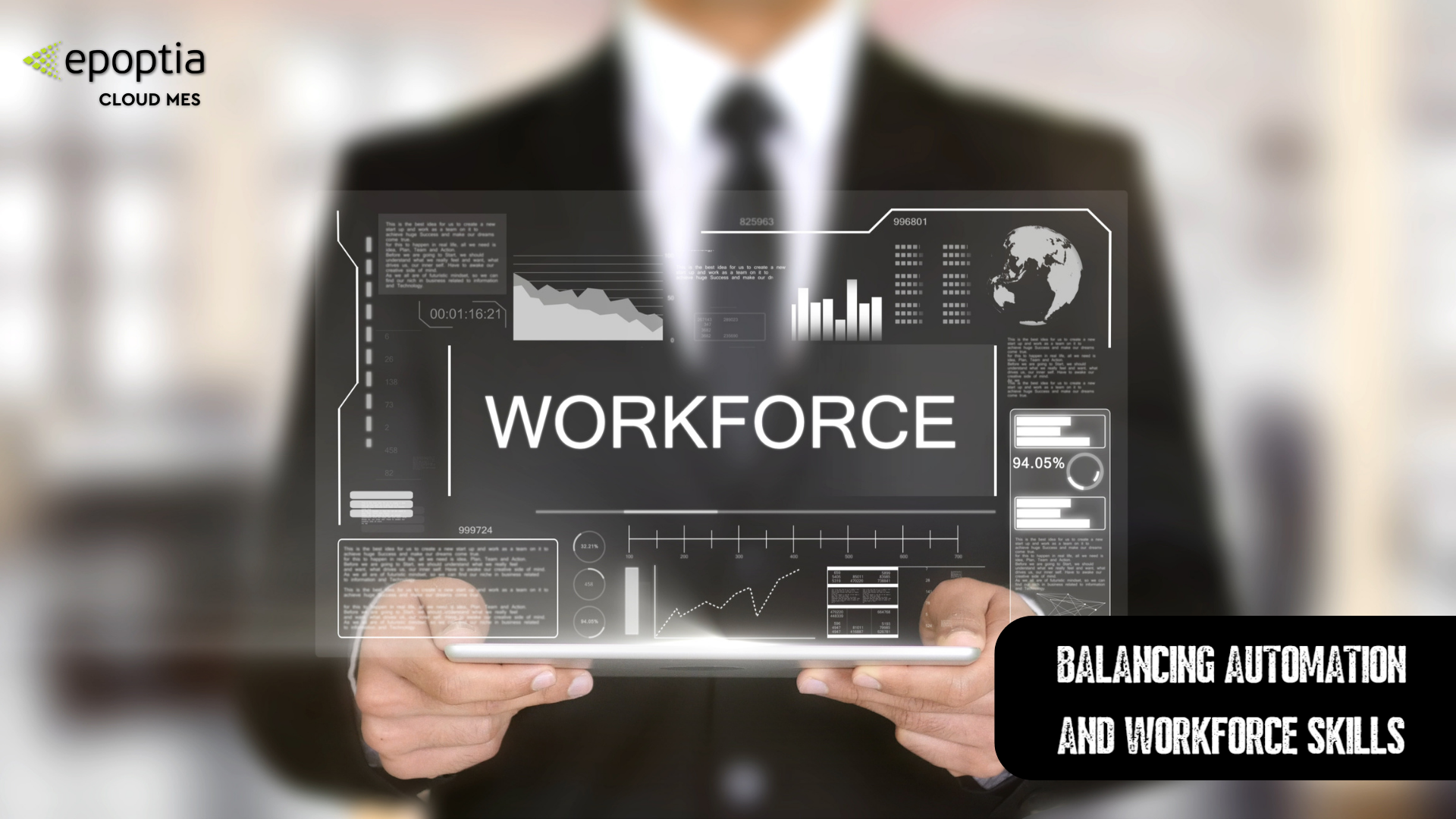Learn how to strike a balance between automation and upskilling your workforce to remain competitive
The landscape of manufacturing is undergoing a transformative shift with the integration of smart technologies. Thus, as we navigate this era of innovation, the challenge becomes apparent — how can businesses strike the right balance between the efficiency of automation and the irreplaceable qualities of the human workforce? In this exploration, we delve into the significance of the human element in smart manufacturing and discuss strategies to harmonize automation with the skills and creativity of human workers.
Embracing Human-Centric Manufacturing Practices
Amidst the whirlwind of rapid technological advancements shaping the manufacturing landscape, it is absolutely imperative for industry leaders not to lose sight of the profound intrinsic value that human workers bring to the production floor. This recognition goes beyond a mere acknowledgment; it underscores the foundational understanding that the amalgamation of human capabilities with cutting-edge technology is the catalyst for unparalleled success in modern manufacturing. That is, the nuanced capabilities of human creativity, problem-solving skills, and adaptability become invaluable, especially in scenarios demanding complex decision-making and intuitive insights.
Capitalizing on Unique Strengths: Unlike machines, humans bring emotional intelligence, intuition, and a holistic understanding of contexts to the production floor. Leveraging these unique strengths ensures a more comprehensive and nuanced approach to manufacturing challenges.
Enhancing Decision-Making: Complex decision-making, especially in scenarios where factors are multifaceted and context-dependent, is an arena where human workers shine. The ability to navigate ambiguity and make informed decisions based on a blend of data and intuition is a forte of human intelligence.
Fostering Innovation: The spark of innovation, the driving force behind leaps in product design and process optimization, often originates from the minds of human creators. A human-centric approach fosters a culture of innovation, pushing the boundaries of what is possible.
In essence, embracing a human-centric approach is not just a nod to the roots of manufacturing, but a strategic move to fortify the industry against the challenges and opportunities of the future.
Striking the Right Balance: Automation & Workforce
In the journey towards the future of manufacturing, finding the right equilibrium between automation and workforce skills emerges as a defining challenge. It’s not a question of choosing between the two; rather, it’s about orchestrating a harmonious symphony where each component contributes to the overall efficiency and innovation of the manufacturing process.
Leveraging Automation for Repetitive Tasks: Automation excels in handling repetitive and mundane tasks, a realm where precision and consistency are paramount. By automating such tasks, businesses can liberate human workers to focus on activities that demand creativity and critical thinking. Thus, this dual approach not only ensures optimal resource utilization but also maximizes the efficiency of both automated systems and human workers.
Investing in Workforce Training and Upskilling: Investment in the continuous training and upskilling of the workforce emerges as a pivotal strategy. While automation may alter the nature of certain jobs, a well-skilled workforce can seamlessly transition into roles that complement automated systems. Businesses need to adopt a proactive approach to education and training, empowering their workforce to adapt to evolving technological landscapes.
Strategies for Successful Integration
As manufacturing environments embrace the transformative power of automation, navigating the integration landscape becomes paramount. But, beyond the technical aspects, the success of automation hinges on strategic approaches that cultivate collaboration between automated systems and the human workforce.
Creating a Culture of Continuous Learning: In the era of automation, where the only constant is change, fostering a culture of continuous learning emerges as a linchpin for successful integration. More specifically, this involves creating platforms for employees to acquire new skills, adapt to technological changes, and contribute actively to the innovation and improvement processes. A learning culture ensures that the workforce remains agile and ready to embrace evolving technologies.
Addressing Workforce Apprehensions: Integration of automation can be met with resistance and apprehensions among the workforce. Open communication and transparent discussions about the benefits of automation, its role in enhancing job quality, and the opportunities for upskilling can mitigate these concerns. More specifically, a collaborative approach to change management ensures that the workforce is aligned with the company’s vision for the future.
Ensuring Ethical Implementation: The ethical considerations of automation cannot be overlooked. That is, businesses must address potential issues such as job displacement and the dehumanization of work. Strategies should be in place to ensure that the integration of technology aligns with ethical standards, promoting a positive work environment and contributing to the overall well-being of the workforce.
Realizing the Full Potential with Epoptia MES
Born inside production, Epoptia understands the intricacies and challenges that businesses face on a daily basis. Our MES solution is not just a technological tool; it’s a partner that speaks the manufacturing language fluently. That is, we comprehend the value of the human touch in manufacturing processes, and, to that end, we have crafted our system to complement and enhance the skills of your workforce. By providing a comprehensive MES, we ensure that automation enhances, not replaces, human skills. Real-time analytics empower decision-making, and the system supports a culture of continuous improvement.
In conclusion, the era of smart manufacturing demands a thoughtful approach to balancing automation and the human workforce. Businesses that recognize the value of the human element, invest in workforce training, and implement automation ethically are poised for sustainable success.
Embrace the future of manufacturing with Epoptia MES and ask for a presentation today.
For more information, check https://bit.ly/3vYnb4f.




















